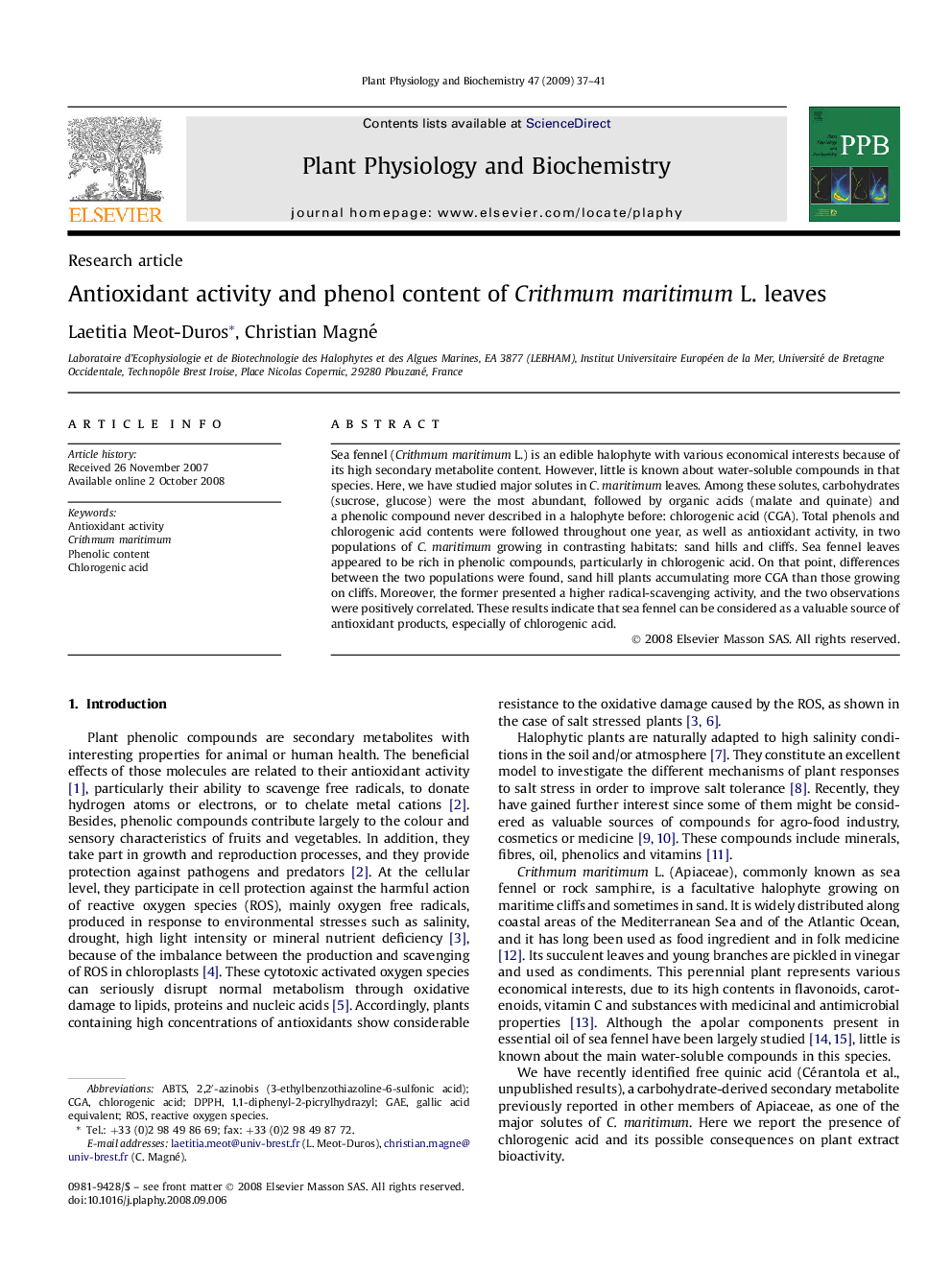| Article ID | Journal | Published Year | Pages | File Type |
|---|---|---|---|---|
| 2015417 | Plant Physiology and Biochemistry | 2009 | 5 Pages |
Sea fennel (Crithmum maritimum L.) is an edible halophyte with various economical interests because of its high secondary metabolite content. However, little is known about water-soluble compounds in that species. Here, we have studied major solutes in C. maritimum leaves. Among these solutes, carbohydrates (sucrose, glucose) were the most abundant, followed by organic acids (malate and quinate) and a phenolic compound never described in a halophyte before: chlorogenic acid (CGA). Total phenols and chlorogenic acid contents were followed throughout one year, as well as antioxidant activity, in two populations of C. maritimum growing in contrasting habitats: sand hills and cliffs. Sea fennel leaves appeared to be rich in phenolic compounds, particularly in chlorogenic acid. On that point, differences between the two populations were found, sand hill plants accumulating more CGA than those growing on cliffs. Moreover, the former presented a higher radical-scavenging activity, and the two observations were positively correlated. These results indicate that sea fennel can be considered as a valuable source of antioxidant products, especially of chlorogenic acid.
